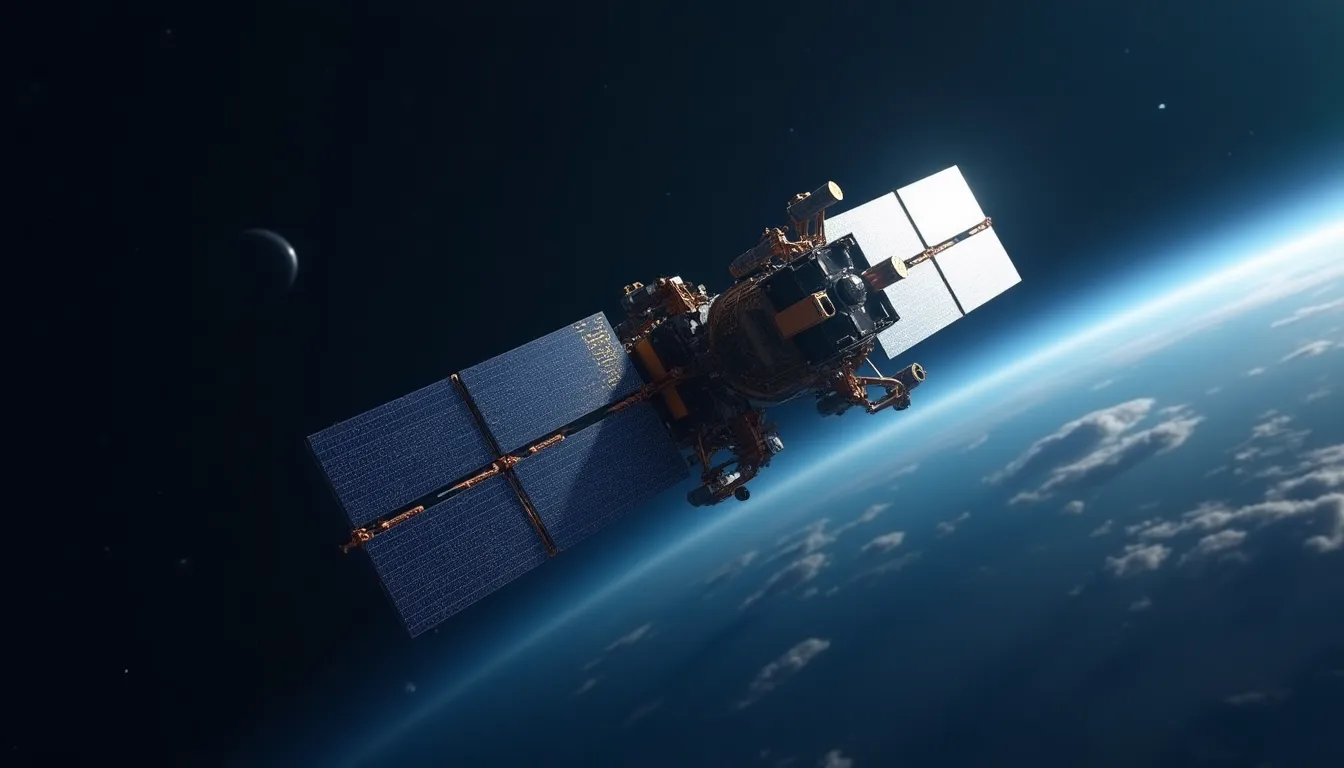The satellite industry is undergoing a transformative phase marked by rapid advancements and unprecedented growth. As of September 2025, significant developments in satellite constellations, market dynamics, and unique observational capabilities are reshaping how we perceive connectivity and data utilization in aerospace and defense sectors. This article delves into the current landscape of satellite technology, highlighting key players, market trends, and innovative projects.
SpaceX Starlink Expansion: A Milestone in Satellite Constellations
In a landmark achievement, SpaceX celebrated its 500th successful landing of an orbital-class Falcon 9 booster on September 5, 2025. This milestone not only underscores the company’s commitment to rocket reusability but also plays a pivotal role in reducing launch costs. As part of this remarkable year, SpaceX has conducted over 113 launches, deploying more than 2,000 Starlink satellites in 2025 alone. With over 8,000 Starlink satellites now in orbit, SpaceX has established the largest satellite constellation ever deployed.
The Starlink constellation is crucial for providing broadband internet to millions of users, including those in remote and maritime locations. The average launch frequency of more than one per day signifies a robust strategy to enhance global connectivity. As the demand for high-speed internet grows, the importance of such large-scale deployments becomes increasingly vital to bridging the digital divide.
The Satellite Non-Terrestrial Networks (NTN) Market: A Surge in Demand
The global market for Satellite Non-Terrestrial Networks (NTN) is projected to exceed $5.1 billion by 2034, with a remarkable compound annual growth rate (CAGR) of 33.5%. This surge is driven by the need for ubiquitous connectivity, particularly in underserved regions. The integration of satellite technology with 5G and 6G cellular networks, as well as the proliferation of the Internet of Things (IoT) and direct-to-device communications, are key factors fueling this expansion.
Advancements in deploying large LEO constellations, coupled with affordable launch capabilities, are enabling a diverse range of applications across commercial, defense, and government sectors. Technologies such as advanced navigation systems and high-precision fiber optic sensing coils are integral to the functionality of these satellites, ensuring reliable positioning and tracking, crucial for mission-critical operations.
ReOrbit’s Sovereign Satellite Initiative: New Horizons in Space Control
Amidst growing geopolitical concerns, the Finnish startup ReOrbit has emerged as a significant player by raising €45 million (~$53 million) in Series A funding. This initiative is focused on developing sovereign satellite solutions for nations seeking greater control over their satellite communications, independent of commercial providers like Starlink. ReOrbit’s innovative software platform facilitates the management of satellites in both geostationary and low Earth orbits, allowing countries to retain ownership and security over their space assets.
The increasing interest in space sovereignty is reflected in ReOrbit’s ability to secure contracts worth hundreds of millions and multiple memorandums of understanding (MOUs). As nations prioritize space independence, the demand for technologies that enable secure satellite operations is expected to rise, paving the way for a new landscape of satellite communications.
NOAA’s Unique Observational Capabilities: Eclipses from Space
On September 7, 2025, the National Oceanic and Atmospheric Administration (NOAA) utilized its GOES-18 and GOES-19 weather satellites to capture rare and stunning images of both a solar eclipse and a total lunar eclipse. Positioned in geostationary orbits, these satellites monitor Earth and space weather, showcasing their dual capabilities in scientific observation.
The high-resolution imagery provided by NOAA’s satellites not only enhances our understanding of celestial events but also exemplifies the advanced observational technologies employed in modern satellite systems. Such capabilities are crucial for meteorological research, climate monitoring, and even disaster management, demonstrating the multifaceted role of satellites in today’s world.
Conclusion
As we progress through 2025, the satellite industry is poised for unprecedented growth and innovation. From SpaceX’s relentless expansion of the Starlink constellation to emerging sovereign satellite initiatives and advanced observational capabilities, the landscape is rapidly evolving. The integration of satellite technology with cellular networks, IoT, and enhanced navigation systems underscores the critical role of satellites in ensuring global connectivity and security. Moving forward, investment in satellite infrastructure and technology will be essential for meeting the growing demands of a connected world, while also addressing the complexities of space governance and sovereignty.
References
-
Mystery Cable Cuts, SpaceX’s $17B Gamble & Satellite … (ts2.tech) - 9/9/2025 The coming milestone: on September 25, Amazon will send up the next 27 Kuiper satellites via a United Launch Alliance Atlas V rocket ts2.tech.
-
Satellite NTN market size worth $5+ million by 2034—CAGR (news.satnews.com) - 9/9/2025 The global Satellite NTN market size is expected to reach $5,129.52 million by 2034, according to a new study by Polaris Market Research.
-
Moon blocks satellite views of the sun before lunar eclipse (www.space.com) - 9/9/2025 Two NOAA satellites saw a solar eclipse on Sept. 7 as the moon blocked out the sun mere hours before a lunar eclipse was seen on Earth.
-
ReOrbit lands record funding to take on Musk’s Starlink … (techcrunch.com) - 9/9/2025 Finnish startup ReOrbit, has raised a record €45 million Series A for the country to offer “sovereign” satellites.
-
SpaceX Soars, Google Pays Billions, and More (ts2.tech) - 9/6/2025 SpaceX Soars, Google Pays Billions, and More: Tech Bombshells of Sept 5–6, 2025 - TS2 Space.



